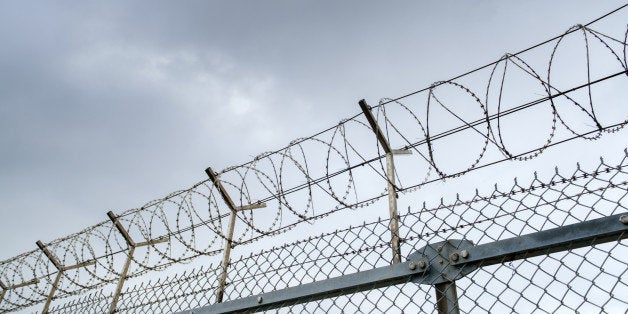
“I am an insider serving a life and 20 year sentence at Riverbend Maximum Security Institution. Twenty-six years ago I was rendered infamous by the State of Tennessee through a judicial process of ‘thingafication,’ replacing my identity with a capitalistic signature, 133881. Since then, at 19 years old, my journey towards humanization has been a struggle . . . to know that you are more than a number and not have the support of your family or community environment to prove otherwise can be depressing.”
America’s Cradle to Prison Pipeline; is a toxic cocktail of poverty, illiteracy, racial disparities, violence and massive incarceration which sentences millions of children of color to social and economic death. Once young people have entered the prison pipeline, to many people they become invisible, just a statistic.
Rahim’s pipeline to prison started during a chaotic childhood in poverty and a struggling family. His mother had given birth twice as a teen before Rahim was born. Rahim's father was never part of his life. His mother worked in a warehouse for minimum wage and struggled to keep food on the table and clothes on her children's backs while refusing government assistance — but Rahim says that was a cost later paid by hungry children who started a life of crime in order to eat and dress like their peers. Rahim was eventually expelled from high school, received a juvenile sentence for auto theft and burglary and was sent to a youth detention center. Less than a year after his release he was charged with felony murder after his gun went off during a robbery and a bullet ricocheted off the floor and killed an employee. He was sent to jail and received a life and 20 year sentence.
Three of his brothers have been his cellmates and he has been locked up with a total of five siblings at two different prisons. He writes about his childhood in verse:
Who Am I? Who am I?
Society doesn't seem to know . . .
You see us in the "now", our prison condition
Blind to the facts of our mental afflictions
Past decisions made before our 15 second/mindless/crime spree/felony convictions.
The money/the honeys/the madness/materialistic sadness
Thirteen brothers/five sisters, seriously drastic.
Who am I, Who am I?
Choking in poverty, the pain runs deep you see . . .
Who am I, Who am I?
My eyes, my ears, my peers; no difference: 5, 10, 15 to 30 years in prison.
Environmental voices in me, our life and death choices to be, anger and stress forcing me,
Public defenders coercing me, my family and friends divorcing me.
Crying shame, born with crime in my veins . . .
still begging for a new beginning.
In prison, “I was determined to survive, upset with myself, angry at the system, and filled with guilt. From jail to prison, I was stripped of my civilian clothing, a symbol that I was no longer fit to be human. My sadness, remorse, and vulnerability I masked with a ‘mean-mug,’ the look of a cold-hearted convict. Old-heads in prison gave me the game, the knowledge of how to live and avoid death.” Eventually Rahim started to realize he was more than the way the system had defined him. “After all the growing pains of becoming a man in prison, disciplinary reports, fights, selling drugs, and rebelling in any way that I could to resist the system, I decided to change.”
Rahim got a chance to participate in a program called SALT: Schools for Alternative Learning and Transformation, which brings college students together with incarcerated men and women to study as peers in college courses and workshops behind prison walls. It was its own kind of new beginning and for Rahim “there was no looking back.” He became a leader in the program, facilitating classes and developing community education sessions and mentoring other “inside” students.
“My learning has forced me to contend with the realities of American society. I wasn’t born a number . . . yet I can’t deny that numbers surround me. More than 2,200,000 fill the jails and prisons across the U.S.A. Million dollar contracts are given to private companies to monopolize the market of the prison industrial complex . . . I know that I’m more than a number because numbers can’t feel, love, breathe or think for themselves. I have dreams, goals, and ambitions.”
Last June, Rahim was released from prison and recently celebrated his 45 birthday — his first outside a prison in 26 years. Rahim received a four-year scholarship to American Baptist College and has become a partner in the Children’s Defense Fund Nashville Organizing Team, speaking locally and nationally and facilitating SALT classes inside a juvenile detention center. He believes “education combined with community equals a peaceful society,” and wants others to believe that they, too, are more than a number — something he never heard as a child, but something he wants to teach other young people as he focuses on helping them become their best selves:
America the Beautiful, America the Great, America, America,
America, It’s not too late.
Who am I? I am you.
